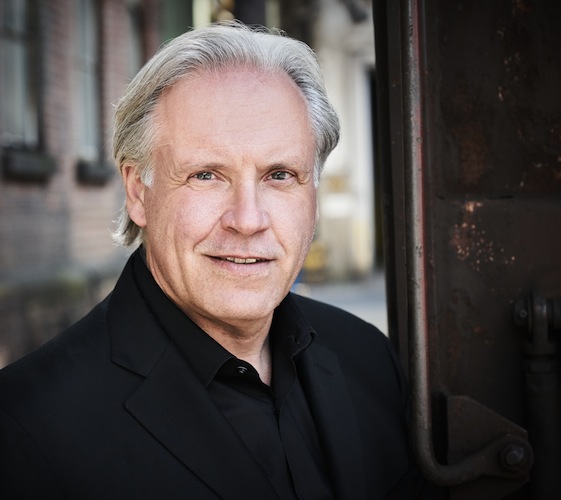Stenz leads transcendent Gaelic-themed program with BSO

Markus Stenz conducted the Baltimore Symphony Orchestra Sunday at the Music Center at Strathmore. Photo: Kaupo Kikkas
One of the best things that has happened at the Baltimore Symphony Orchestra in recent years was Markus Stenz coming aboard as principal guest conductor. The former general music director of the City of Cologne and Gürzenich-kapellmeister had an extraordinary debut season.
Stenz’s first program of 2017-18, heard Sunday afternoon in the Music Center at Strathmore, reaffirmed that listeners should make an effort to hear what he does in front of the band from Charm City.
Certainly more of an effort than indicated by the paltry audience turnout in North Bethesda for the final performance of this program. Maybe it was because of the holiday weekend, maybe it was because of the choice of music—a second half of orchestral music and excerpts from Wagner’s Parsifal. Whatever the reason, It was a shame, because the program, built around the theme of Gaelic legend, was inventive and rewarding.
Speaking before the first piece, Stenz relayed the desire of the musicians to dedicate the concert to the victims of the shooting in Las Vegas last week and to their family members.
Stenz elicited strikingly delicate playing from the violins and cellos in Mendelssohn’s Hebrides Overture, inspired by the 21-year-old composer’s trip to the Scottish island of Staffa in 1829. The purpose of the visit was to see the exposed basalt columns in a structure known as Fingal’s Cave, named for the hero of James Macpherson’s epic poem.
The German conductor’s beat was impulsive, giving the piece a restless quality in the moving notes, never quite even and certainly not dragging. More settled woodwind lines hovered above limpidly, adding to the sense of romantic unpredictability. The playing of the BSO musicians had broad scope and elan, the aura of a mythic land connecting the Scottish locale to the liminal world of the Arthurian Parsifal legends heard later.
Jonathan Carney, the orchestra’s concertmaster, then took the solo spotlight for Max Bruch’s Scottish Fantasy. Bruch wrote the piece before he had visited Scotland, basing its four movements on Scottish folk melodies he had found in a collection in Munich. Carney’s clear tone on the 1687 “Mercur-Avery” Stradivarius was impeccable in the opening movement, a dirge-like setting of the tune “Through the Wood Laddie.”
Carney and Stenz coordinated some folk music-like rubato in the second movement, on the fiddle tune “The Dusty Miller.” Carney’s simple and musical phrasing in the third movement was especially affecting, balancing out some imperfectly tuned double-stops in the more challenging parts of the piece.
The concerto has a prominent part for harp and it was a nice touch to have acting principal harpist Sarah Fuller placed next to the podium, especially for the duets with Carney in the last movement. That section utilizes the tune that goes with the words of Robert Burns in “Scots Wha Hae Wi’ Wallace Bled,” the unofficial national anthem of Scotland, and Bruch’s prominent part for harp added to the Gaelic flavor of the concert.
Stenz has conducted many of the Wagner operas, and his expertise shone through in his reading of the excerpts from Parsifal. He helped the orchestra shape the string unisons that run through the Act I Prelude, seemingly simple lines that have to be subtly inflected and flexible. The orchestra also created a shimmering texture to cloak the intense but soft trumpet solos of principal trumpeter Andrew Balio.
Baritone Stephen Powell deployed a puissant voice as Amfortas, the wounded king of the Grail Kingdom. In the Act I excerpt, “Nein! Lass ihn unhenthüllt,” his howling, anguished tone easily cut through Wagner’s vast orchestration (especially at the climactic shouts “Erbarmen! Erbarmen!”). Jane Marvine’s plangent English horn solo gave just the right air of mystery to the moment of the unveiling of the Grail. The only disappointment of this performance was the use of tubular bells for the church bells called for in the score, an understandable but unsatisfactory substitution.
Stenz expertly paced the massing of sound in the “Transformation Music” from Act I, propelling the music steadily toward the sonic climax with the trombones blaring. Powell sang with grave dignity in the Act III excerpt (“Ja – Wehe!”), as Amfortas commands the Grail Knights to kill him so that the Grail’s light will shine once more. Stenz then conducted the final scene of the opera. Even with the vocal parts for Parsifal and the chorus excised, it was a transcendent moment made possible by Stenz and his growing, increasingly important relationship with the musicians of the BSO.
Markus Stenz returns for two more programs with the BSO next April, including a concert featuring Mahler’s First Symphony April 19 to 21, 2018. bsomusic.org; 410-783-8000.


